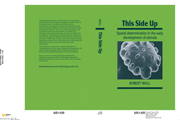Book contents
- Frontmatter
- Contents
- Preface
- Acknowledgements
- 1 Oogenesis
- 2 From oocyte to zygote
- 3 Does cleavage cut up a preformed spatial pattern?: the case of spiralian embryos
- 4 The limits of mosaicism in non-spiralian cleavage
- 5 Cellular interactions in the morula and blastula: the case of sea urchin embryos
- 6 Interactions at morula and blastula in other embryos
- 7 Interactions between moving cells: the case of amphibian gastrula
- 8 Spatial determination in the gastrulae of other groups
- 9 Determination in embryos showing partial cleavage
- 10 Patterns and mechanisms in early spatial determination
- References
- Index
8 - Spatial determination in the gastrulae of other groups
Published online by Cambridge University Press: 06 October 2009
- Frontmatter
- Contents
- Preface
- Acknowledgements
- 1 Oogenesis
- 2 From oocyte to zygote
- 3 Does cleavage cut up a preformed spatial pattern?: the case of spiralian embryos
- 4 The limits of mosaicism in non-spiralian cleavage
- 5 Cellular interactions in the morula and blastula: the case of sea urchin embryos
- 6 Interactions at morula and blastula in other embryos
- 7 Interactions between moving cells: the case of amphibian gastrula
- 8 Spatial determination in the gastrulae of other groups
- 9 Determination in embryos showing partial cleavage
- 10 Patterns and mechanisms in early spatial determination
- References
- Index
Summary
Separate germ layers form in the development of all diploblastic and triploblastic animals. In a few cases the layers form simply by tangential divisions of the cells in an earlier single layer (delamination). In all other cases some cells move from an outer to an inner position by some form of active cell migration and/or inward folding of a cell sheet. All such rearrangements offer opportunities for new interactions among the cells.
This chapter is concerned with any such interactions, in non-amphibian holoblastic embryos, which affect the determination of areas within the embryo. Some of these embryos have, however, completed the determination of their major areas at earlier stages, and only refine it in minor ways during gastrulation. They may give us some clues as to which processes are required for the morphogenetic movements and which for determination, but our treatment of them can be brief. Other cases, where there is positive evidence for inductive interactions, are also reviewed here, while interactions in meroblastically cleaving embryos are dealt with in Chapter 9.
Sea urchins
The prospective areas of the major sea urchin larval organs are arranged along the animal–vegetal axis of the early embryo, and are largely determined at morula and blastula stages (Chapter 5). During gastrulation cells at different animal–vegetal levels show different behaviour patterns, but their interactions seem to have little effect on determination in this axis. Dorso-ventrality is also fixed before gastrulation, but the final extent of each primordium in this plane is probably still labile (see below).
- Type
- Chapter
- Information
- This Side UpSpatial Determination in the Early Development of Animals, pp. 253 - 266Publisher: Cambridge University PressPrint publication year: 1990



